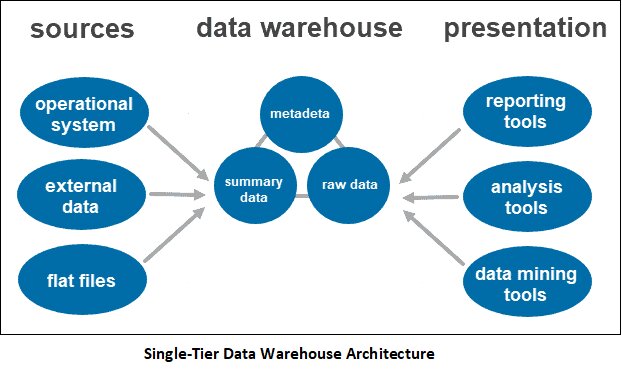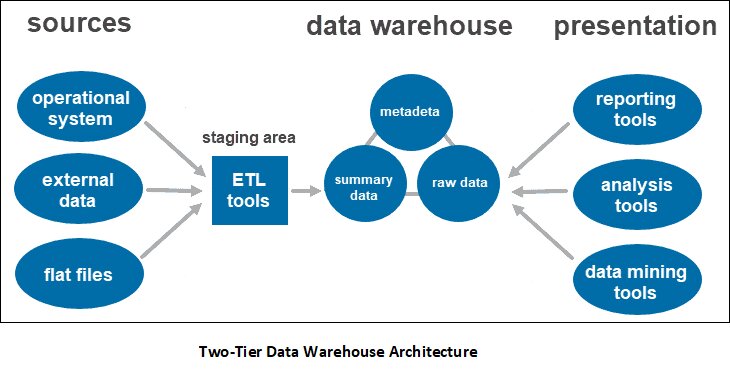Data Warehouse Architecture – Basic Concepts
Every task of any data-driven organization is dependant on how effective data management is. It becomes crucial to choose the right data warehouse systems with the right data warehouse architecture. The technology we have today allows us to make a combination of data backup with high security and availability.
With this versatility and security, data warehouse systems also offer the flexibility to work remotely without reducing efficiency and ensuring quick access to information. The best part is, you are no more dependent on physical media such as USB sticks or external hard drives.
So, the question now arises, what is a data warehouse? In simple terms, a data warehouse is a heterogeneous collection of different data sources. It ensures organized and structured data that can later be used for different organization requirements, like data analysis or business intelligence.
What is Data Warehouse Architecture?
Data warehouse architecture explains the arrangement or placement of data across different databases. With the help of a modern data warehouse, the most effective ways to extract information from the humongous raw data. Data warehouse architecture uses business intelligence tools and models to convert raw data into a simple and easy-to-use warehousing structure. A data warehouse requires on-premise servers for smooth functioning.
Data storage architecture could be applied either to an entire organization or very strictly in a security subsystem.
Must Read – Top Data Warehouse Interview Questions and Answers
Best-suited Data Science courses for you
Learn Data Science with these high-rated online courses
Single-Tier Data Warehouse Architecture
Single-tier architecture is not a very popular approach. It is mainly used to minimize the amount of stored data and remove redundancy. Single-tier architecture centers on producing a dense set of data. It is not suitable for businesses with complex data requirements and multiple data channels.
For complex data streams, there is a need to have multi-tier data warehouse architectures. One major disadvantage of Single-tier data warehouse architecture is that it does not enable analytical and transactional processing.
To learn about data science, read our blog on – What is data science?
Two-Tier Data Warehouse Architecture
The two-tier data warehouse architecture uses a system and a database server. It is among the most popular architectures among the small enterprises that use servers as a data mart. Two-tier data warehouse architecture is very efficient at data storage and data management. However, there is a network limitation issue as it supports a less number of users.
Three-Tier Data Warehouse Architecture
A traditional 3 tier architecture of a data warehouse structure include –
- Top Tier
- Middle Tier
- Bottom Tier
Top Tier
The top tier is a front-end client layer. It includes different types of query and reporting tools, analysis tools, and/or data mining tools. The data and logic-applied information acquired at this level can be used for business purposes. This level is important from the perspectives of requirement analysis, costs involved, features that determine profit-based business deals.
Middle Tier
The middle tier is an Online Analytical Processing Server (OLAP). This level is implemented using a relational OLAP (ROLAP) model or a multi-dimensional OLAP (MOLAP) model. This tier offers the user an abstract view of the database.
Bottom Tier
The bottom tier comprises the data warehouse server. The bottom tier is majorly a Relational DataBase Management System (RDBMS) and includes specialized data marts and a metadata repository.
Must Explore – Data Mining Courses
Conclusion
Data warehousing architecture is all about understanding and documenting plans for effective and efficient data warehousing. It is largely dependent on factors such as the value of data, the cost-effectiveness of technologies, and the physical limitations of the deployed equipment. A high-quality data warehousing architecture can articulate the approach to data warehousing at the granular detail and summary levels. Such a scenario is ideal for the businesses as they provide the executive vision that can ultimately lead to achieving business goals.
If you have recently completed a professional course/certification, click here to submit a review.

Rashmi is a postgraduate in Biotechnology with a flair for research-oriented work and has an experience of over 13 years in content creation and social media handling. She has a diversified writing portfolio and aim... Read Full Bio





